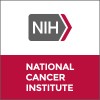
17-N-Allylamino-17-Demethoxygeldanamycin in Treating Patients With Advanced Epithelial Cancer, Malignant...
AIDS-related Peripheral/Systemic LymphomaAIDS-related Primary CNS Lymphoma52 moreDrugs used in chemotherapy work in different ways to stop cancer cells from dividing so they stop growing or die. This phase I trial is studying the side effects and best dose of 17-N-allylamino-17-demethoxygeldanamycin in treating patients with advanced epithelial cancer, malignant lymphoma, or sarcoma

Flavopiridol in Treating Children With Relapsed or Refractory Solid Tumors or Lymphomas
Recurrent Childhood Brain Stem GliomaRecurrent Childhood Cerebellar Astrocytoma21 moreDrugs used in chemotherapy use different ways to stop cancer cells from dividing so they stop growing or die. Phase I trial to study the effectiveness of flavopiridol in treating children who have relapsed or refractory solid tumors or lymphoma.

Wild-Type Reovirus in Combination With Sargramostim in Treating Younger Patients With High-Grade...
Childhood AstrocytomaChildhood Atypical Teratoid/Rhabdoid Tumor8 moreThis phase I trial studies the side effects and the best dose of wild-type reovirus (viral therapy) when given with sargramostim in treating younger patients with high grade brain tumors that have come back or that have not responded to standard therapy. A virus, called wild-type reovirus, which has been changed in a certain way, may be able to kill tumor cells without damaging normal cells. Sargramostim may increase the production of blood cells and may promote the tumor cell killing effects of wild-type reovirus. Giving wild-type reovirus together with sargramostim may kill more tumor cells.

Plerixafor After Radiation Therapy and Temozolomide in Treating Patients With Newly Diagnosed High...
Adult EpendymoblastomaAdult Giant Cell Glioblastoma7 moreThis pilot phase I/II trial studies the side effects and best dose of plerixafor after radiation therapy and temozolomide and to see how well it works in treating patients with newly diagnosed high grade glioma. Plerixafor may stop the growth of tumor cells by blocking blood flow to the tumor. Drugs used in chemotherapy, such as temozolomide, work in different ways to stop the growth of tumor cells, either by killing the cells or by stopping them from dividing. Radiation therapy uses high energy x rays to kill tumor cells. Giving plerixafor after radiation therapy and temozolomide may be an effective treatment for high grade glioma.

Gadobutrol Versus Gadopentetate Dimeglumine or Gadobenate Dimeglumine Before DCE-MRI in Diagnosing...
Adult Anaplastic (Malignant) MeningiomaAdult Anaplastic Astrocytoma23 moreThis pilot clinical trial compares gadobutrol with standard of care contrast agents, gadopentetate dimeglumine or gadobenate dimeglumine, before dynamic contrast-enhanced (DCE)-magnetic resonance imaging (MRI) in diagnosing patients with multiple sclerosis, grade II-IV glioma, or tumors that have spread to the brain. Gadobutrol is a type of contrast agent that may increase DCE-MRI sensitivity for the detection of tumors or other diseases of the central nervous system. It is not yet known whether gadobutrol is more effective than standard of care contrast agents before DCE-MRI in diagnosing patients with multiple sclerosis, grade II-IV glioma, or tumors that have spread to the brain.

ABT-888 and Temozolomide in Treating Young Patients With Recurrent or Refractory CNS Tumors
Childhood Atypical Teratoid/Rhabdoid TumorChildhood Central Nervous System Germ Cell Tumor26 moreThis phase I trial is studying the side effects and best dose of ABT-888 when given in combination with temozolomide in treating young patients with recurrent or refractory CNS tumors. ABT-888 may stop the growth of tumor cells by blocking some of the enzymes needed for cell growth. Drugs used in chemotherapy, such as temozolomide, work in different ways to stop the growth of tumor cells, either by killing the cells or by stopping them from dividing. Giving ABT-888 together with temozolomide may kill more tumor cells.

Vorinostat and Bortezomib in Treating Young Patients With Refractory or Recurrent Solid Tumors,...
Childhood Burkitt LymphomaChildhood Central Nervous System Choriocarcinoma34 moreThis phase I trial is studying the side effects and best dose of vorinostat when given together with bortezomib in treating young patients with refractory or recurrent solid tumors, including CNS tumors and lymphoma. Vorinostat and bortezomib may stop the growth of tumor cells by blocking some of the enzymes needed for cell growth and by blocking blood flow to the tumor.

Temozolomide and O6-Benzylguanine in Treating Children With Recurrent Brain Tumors
Childhood Central Nervous System Germ Cell TumorChildhood Choroid Plexus Tumor23 morePhase I trial to study the safety of combining O6-benzylguanine with temozolomide in treating children who have recurrent or refractory brain tumors. Drugs used in chemotherapy use different ways to stop tumor cells from dividing so they stop growing or die. O6-benzylguanine may increase the effectiveness of temozolomide by making tumor cells more sensitive to the drug.

Oxaliplatin and Irinotecan in Treating Young Patients With Refractory Solid Tumors or Lymphomas...
Childhood Burkitt LymphomaChildhood Central Nervous System Germ Cell Tumor28 moreThis phase I trial is studying the side effects and best dose of oxaliplatin when given together with irinotecan in treating young patients with refractory solid tumors or lymphomas. Drugs used in chemotherapy, such as oxaliplatin and irinotecan, work in different ways to stop the growth of cancer cells, either by killing the cells or by stopping them from dividing. Oxaliplatin may help irinotecan kill more cancer cells by making cancer cells more sensitive to the drug. Giving oxaliplatin together with irinotecan may kill more cancer cells.

Combination Chemotherapy Followed by Radiation Therapy in Treating Patients With Medulloblastoma,...
Brain and Central Nervous System TumorsRATIONALE: Drugs used in chemotherapy use different ways to stop tumor cells from dividing so they stop growing or die. Radiation therapy uses high-energy x-rays to damage tumor cells. Combining more than one drug or combining chemotherapy with radiation therapy may kill more tumor cells. PURPOSE: Phase II trial to study the effectiveness of combination chemotherapy followed by radiation therapy in treating patients who have surgically resected, newly diagnosed medulloblastoma or supratentorial primitive neuroectodermal tumor, or incompletely resected ependymoma.
